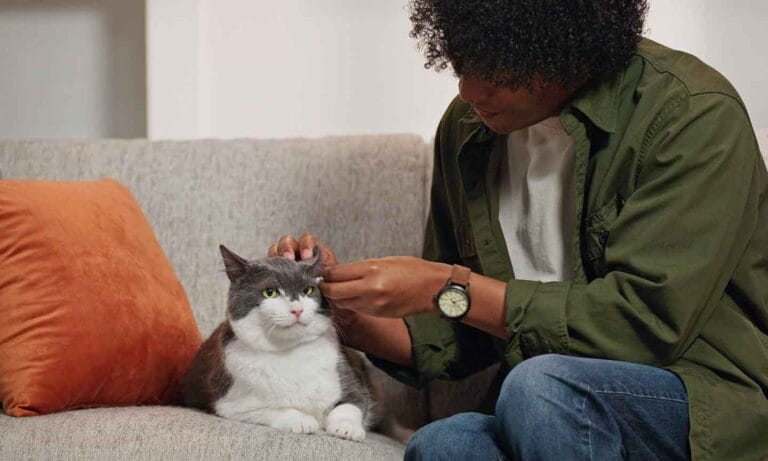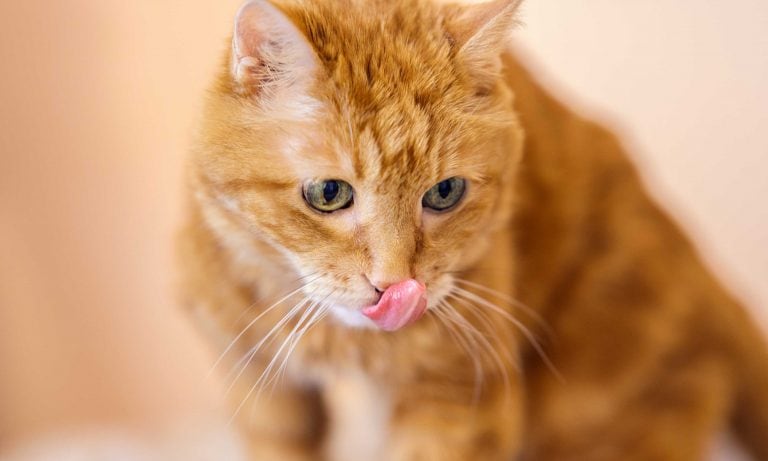As a small animal veterinarian and owner of a small animal practice, I evaluate and help treat cat diseases daily. Unfortunately, cat parents don’t bring their feline friends to the vet for wellness visits as much as dog owners do, at least in my experience. So, when I do see a cat, it is typically for illness or trauma.
Read on to find out about the most common cat diseases, and how we can treat and prevent our cats from getting sick in the first place.
1. Feline Upper Respiratory Infections
Upper respiratory infection (URI) in cats, similar to a human’s common cold, are one of the most common cat diseases. This highly contagious viral and bacterial infection is transmitted by contact with saliva or discharge from the nose and eyes of infected cats.
Once infected, a cat becomes a “chronic carrier” of the disease and can become sick when immunocompromised, such as at times of high stress—new pets in the house, moving, new family members, etc.
Common Causes of Upper Respiratory Infection in Cats
Viral Agents:
- Feline herpesvirus type-1 (FHV-1) or feline viral rhinotracheitis (FVR)
- Feline calicivirus (FVC)
- Feline retrovirus, such as feline immunodeficiency virus (FIV) or feline leukemia virus (FeLV), can be contributing factors in URIs
Bacterial Agents:
- Bordetella bronchiseptica (B. bronchiseptica)
- Chlamydophila felis (C. felis)
- Mycoplasma spp. (bacteria), a less common contributor
Common Clinical Signs/Symptoms
- Sniffling and/or sneezing
- Clear to pus-like discharge from the eyes and nose
- Coughing
- Lethargy
- Oral ulcers
- Fever
- Poor appetite
Diagnosis generally is based on your cat’s history and the clinical signs. However, your veterinarian may want to run tests, such as bloodwork and tests for feline leukemia and FIV to assess for causes.
Your veterinarian will prescribe the proper treatment for your cat based on the severity of his clinical signs.
Common Treatments
- Pet antibiotics
- Use a humidifier or steam bathroom treatments for short periods of time to help break up the congestion
- Add lysine to your cat’s diet. Lysine is an amino acid known to have antiviral properties
- Encourage eating by offering wet cat foods, as their more pungent odors attract cats
- Clear his eyes and nose of discharge
- Decrease stress in the home
Once infected, upper respiratory infection in cats usually lasts seven to 21 days. Prevention is key to help control the disease. Make sure your cat is vaccinated yearly for feline leukemia, especially if he goes outside and/or is exposed to other cats.
If you live in a multi-pet household, disinfect shared items, such as food bowls, litter boxes and bedding, regularly. Prevent direct contact with other infected cats.
2. Feline Leukemia (FeLV) and 3. Feline Immunodeficiency Virus (FIV)
Feline Leukemia or FeLV in cats is a highly contagious retrovirus and possibly fatal. The disease suppresses a cat’s immune system, potentially setting him up for illness and secondary infection.
This virus is transmitted through shared contact, such as a cat food bowl or a water bowl.
Feline leukemia is diagnosed with a simple blood test. Most veterinarians test yearly for FeLV in cats as part of a routine screening examination based on the cat’s lifestyle and risk of disease.
Feline Immunodeficiency Virus or FIV is a highly contagious retrovirus that suppresses and weakens a cat’s immune system, thus reducing his ability to fight infection. Cat fights commonly spread FIV through the saliva in bite wounds and scratches.
Common Clinical Signs/Symptoms of FeLV and FIV
- No signs at all, as some cats are positive for either retrovirus and never exhibit any signs of illness
- Runny eyes or nose
- Weight loss
- Bad breath
- Periodontal disease (oral disease)
- Loss of appetite
- Vomiting
- Lethargy
- Pale gums
Preventive Measures
Unfortunately, FeLV and FIV cannot be treated; they are lifelong diseases. The good news is that they are not automatically fatal. All cats are at risk for infection, so prevention is key.
- Yearly vaccinations, especially if your cat goes outside or is exposed to other cats
- Yearly wellness visits and screening blood tests to assess for exposure to disease
- Limiting exposure to other cats. If possible, keep your cats indoors to decrease his risk of exposure to other felines.
- Spay or neuter your pet. This help to decrease the behavior desire to mate or fight with other cats.
- Make sure any new cats to the household are disease-free prior to coming home.
4. Cat Bite Wounds
Fight wounds are common in cats because they are territorial by nature. Fighting is a behavioral response to defending their territory.
Male cats typically fight more often and sustain more cat bite injuries than females. Most untreated cat bite traumas result in infection, so treatment is necessary to prevent serious illness and disease.
Localized infections, such as an abscess or a closed-off pocket of puss, are common bite wound complications. More serious developments such as cellulitis and systemic illness resulting in infection and even sepsis may result if bite wounds are left untreated.
Common Clinical Signs/Symptoms
- Swelling under the skin that can be warm to the touch and usually painful
- Limping
- Lethargy
- Fever
- Excessive grooming of the affected area
In more severe cases:
- Lethargy and fever
- Cellulitis—a bacterial infection of the tissue beneath the skin
- In very rare circumstances, septic arthritis, osteomyelitis or an infection of the joint or bone can occur
Common Treatments for Cat Bite Wounds
Your veterinarian will check your cat’s entire body, clean wounds properly with antiseptic and recommend systemic antibiotics. If your veterinarian treats the wounds with antibiotics within 24 hours, you most likely prevent a localized infection or abscess infection.
If your cat does not receive antibiotics immediately, an abscess likely will form resulting in more involved treatment. With an abscess, your veterinarian will recommend opening, draining and cleaning the site with antiseptic flush.
More extensive wounds may requiring a debridement—removal of the unhealthy tissues—and placement of a drain for a few days. Your veterinarian is the best resource for creating an appropriate treatment plan with you for your cat.
Prevention is essential to avoid cat bite traumas. Neutering your cat may reduce the territorial behavioral that leads to cat fights. Keeping your cat indoors during the evening when cat fights are more common also can help prevent trauma.

Featured Image: Chewy Studios
Share:










